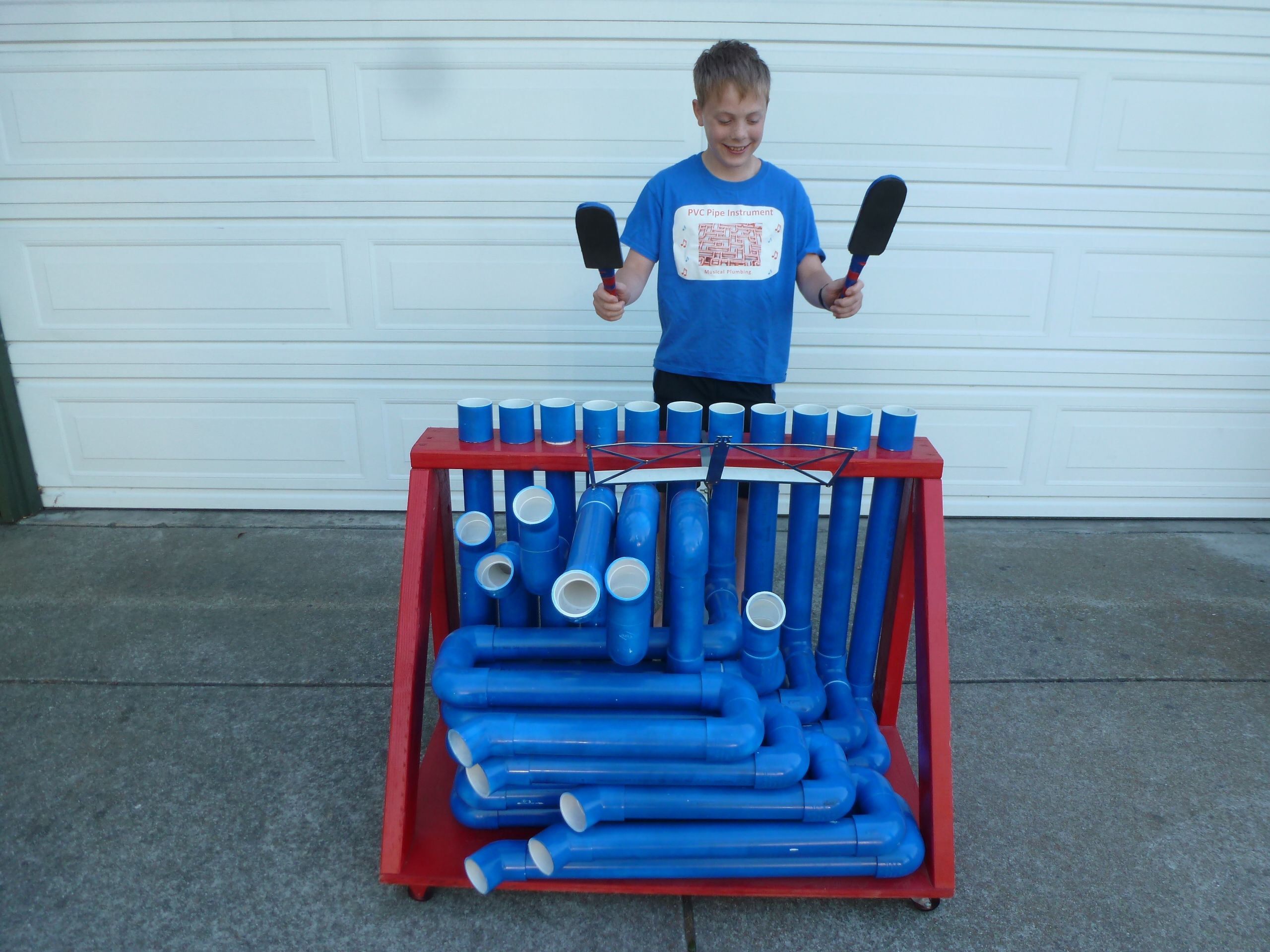I have always loved beating on things. So when I saw Blue Man Group beating on large pipes of different lengths to make music in one of their performances, I thought that was really cool. But it wasn’t until I saw a regular kid a little older than me performing on YouTube with his own instrument that I was inspired to take on this challenge myself.
I enjoy listening to music, and I enjoy playing music even more. Although I have access to a piano and other traditional instruments, I have always been partial to things that I build myself. The basic principle of making music with pipes is to beat on one end to create a pressure wave. The length of the pipe determines the length of the wave, and different wave lengths make different notes. I already knew that much, but in order to make an instrument that could play real music, I was going to have to get a bit more scientific about it. I had a lot of questions to get answered.
How can I get a pipe to make a specific note? How many notes do I need to play different songs? Which notes should I make? Can notes be too high or too low to sound good on pipes? How big a project am I really up to taking on?
I knew that if I created a note to match every key on a piano, I would probably fill a room with pipes, and that would be way too big a project and also prohibitively expensive. But I have never needed all of those keys to play anything. For Mary Had A Little Lamb, I only need three notes, or pipes. For Jingle Bells, I need 5. I eventually decided that I would need at least one octave, plus a few extra notes to play a reasonable variety of songs.
A great thing about this project is that everyone can make different decisions and come up with a personalized instrument to suit their needs. I’ll describe what I did so you can follow along or make changes as you wish.
The first thing to figure out is how long each pipe needs to be. I chose to make 11 notes, from G2 to C4 (using piano note designations). Here is an excerpt from a handy table I found on the internet to help with the pipe lengths. You may find charts with slightly different numbers, but these will be a good starting point.
Note that the diameter of the pipe doesn’t change the note, just the tone. I used 2-inch PVC, which produces a good sound and is a good size for hitting with paddles. You can also use ABS pipe and get the same results.
At first, I assumed that if I made a pipe exactly the length of the desired note’s wavelength, I would get that note exactly. This is not true. The real world doesn’t seem to work that nicely. So even with a straight pipe, adjustments need to be made. Of course, with an instrument such as we are making, the pipes aren’t straight. So I did some experiments to figure out how much length an “elbow” adds to the effective wavelength through trial and error. I compared a straight pipe that I “tuned” to a specific note, and then tried to match that note with two sections of pipe connected in the middle by an elbow. I found that each elbow added about 2-1/4″ inches to the wavelength.
Armed with the results of my research and planning, I was ready to design and build the instrument. Feel free to use this background to develop a plan for your own instrument, then proceed to the design and build steps below.




















